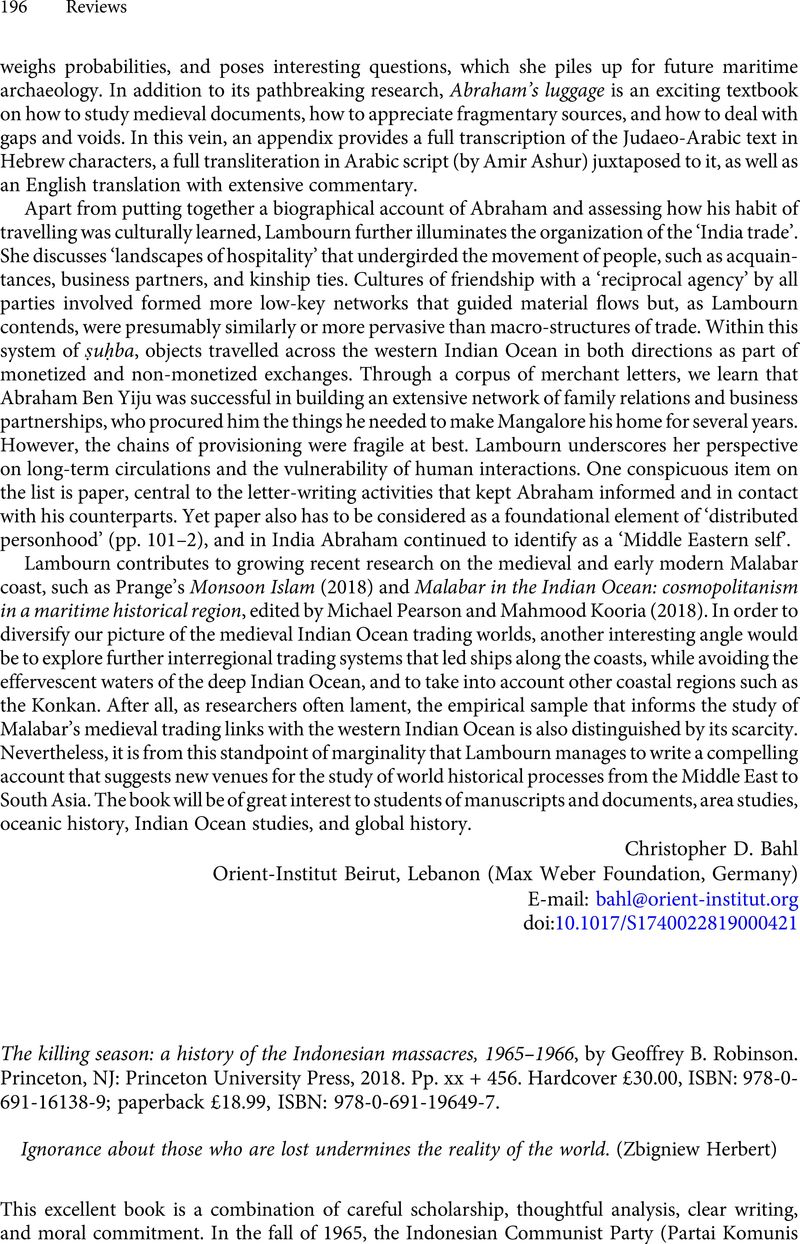No CrossRef data available.
Article contents
The killing season: a history of the Indonesian massacres, 1965–1966, by Geoffrey B. Robinson. Princeton, NJ: Princeton University Press, 2018. Pp. xx + 456. Hardcover £30.00, ISBN: 978-0-691-16138-9; paperback £18.99, ISBN: 978-0-691-19649-7.
Published online by Cambridge University Press: 13 February 2020
Abstract

- Type
- Reviews
- Information
- Copyright
- © Cambridge University Press 2020
References
1 Robinson points out that the frequently cited figure of 500,000 deaths is a conservative estimate. Other estimates, including some articulated by senior members of the Indonesian armed forces who participated in the massacres, are considerably higher.
2 Discussed, for example, in Odd Westad, Arne, The global Cold War: Third World interventions and the making of our times, Cambridge: Cambridge University Press, 2007Google Scholar.
3 For instance, Pakistan and Egypt, with the Iranian Pasdaran as another possible analogue.
4 In a manner somewhat analogous to events in Korea, the USA became the patron of officers who had been Japanese clients. See Cumings, Bruce, The Korean War: a history, New York: Modern Library, 2011Google Scholar.
5 Preston, Paul, The Spanish holocaust: inquisition and extermination in twentieth-century Spain, New York: W.W. Norton, 2013Google Scholar.
6 See also Madley, Benjamin, An American genocide: The United States and the California Indian catastrophe, New Haven, Yale University Press, 2016Google Scholar.



